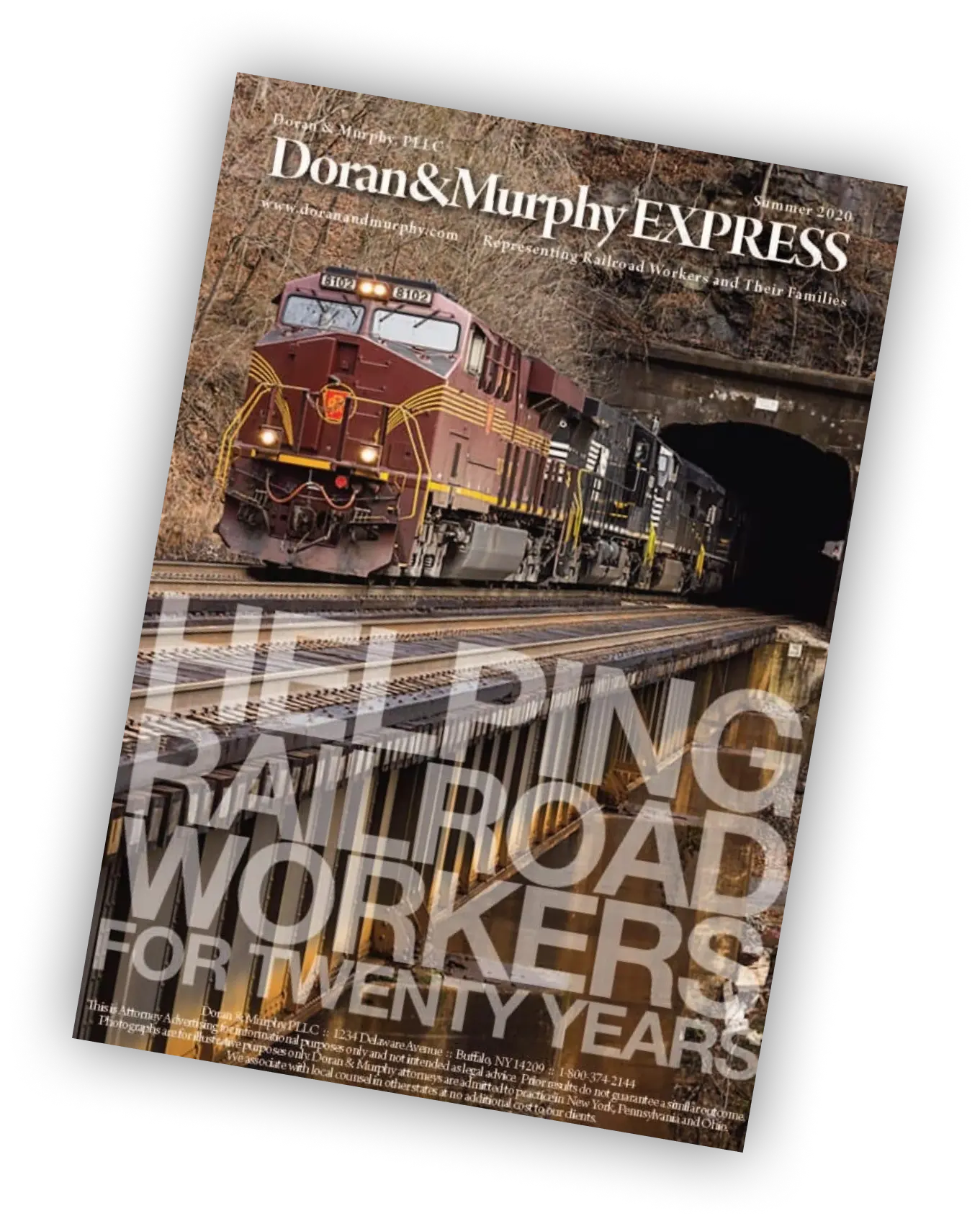
We are regularly asked by railroad workers what they should tell their doctors about their work and the substances they were exposed to. The simple fact is that railroad workers in all different crafts are exposed to lots of different toxic dusts and fumes that cause cancer and serious lung diseases. We recommend that workers make a list of such exposures so they can talk to their doctor about them. Often times these exposures occurred decades ago so making a list can help you remember them while speaking to the doctor. This can be especially true because busy doctors may be in a hurry to get in and out of the examining room and onto the next patient. Being prepared is key!
The reason it is helpful for your doctor to know about your exposures is your doctor may want to order certain periodic surveillance testing to screen for cancer. The most obvious example of this when workers have been exposed over a period of years to asbestos, diesel exhaust, welding fumes, or silica dust from locomotive sanders and ballast dust. All of these substances are Group 1 human carcinogens according to the International Agency for Research on Cancer (IARC), which means there is no dispute that exposure to these dusts and fumes cause cancer. Given that IARC and the National Institute of Occupational Safety and Health (NIOSH) have stated that there is no safe level of exposure to carcinogens, your physician may want to order periodic CT scans of your lungs because of significant railroad exposures to asbestos, diesel exhaust, silica or ballast/rock dust. The fact that many railroad workers smoked cigarettes makes such periodic testing all the more important because smoking and work exposures together can greatly multiply the risk of developing cancer due to the concept of synergy which was addressed in a prior blog. Periodic surveillance testing to catch cancer early is always the goal. When cancer is detected early, treatment is much more likely to be successful which increases the rate of survival and your odds of beating the cancer. You should never underestimate the importance of periodic cancer screening such as CT Scans and X-rays. However, unless your doctor knows about your exposures, your doctor is not likely to order such testing. Educating your doctor is the key!
We also recommend that you tell your doctor at periodic appointments about any changes in your health and provide specific details about how you are feeling. You should not automatically assume that any changes in your health are because you are another year older. For example, if you notice more shortness of breath or chest pain, tell your doctor. It could be a sign of something serious such as cancer and not just getting older. Identifying those subtle, early symptoms could make a difference and lead to an early diagnosis and more treatment options!
Another crucial point is to tell your doctor about whether other railroad coworkers you worked with have been diagnosed with cancer. Why is that important? Because when groups of workers with similar workplace exposures come down with cancer, it is known as a “cancer cluster.” Identifying these clusters is a critical way to ensure that your doctor adequately investigates the potential work-relatedness of your cancer. This will help your physician reach the right diagnosis, including a work-related, occupational cancer. It could also save the lives of railroad workers in the future as more and more physicians learn about documented cancer clusters in the railroad industry!
The exposures encountered by railroad workers are varied and can include asbestos, diesel exhaust, silica, ballast dust, creosote, welding fumes, weed sprays, benzene, chemicals, and solvents. These substances have been linked to different types of cancer involving in the lungs, lung pleura (mesothelioma), bladder, throat, larynx, esophagus, colon, rectum, stomach, and kidney. They can also cause blood cancers such as Non-Hodgkin lymphoma, multiple myeloma, leukemia, and myelodysplastic syndrome (MDS), as well as severe lung disease including pulmonary fibrosis. You should keep in mind that there is a long “latency period” (or delay) between the time when the toxic exposures happened and when the cancer later develops. Often times this latency period is many years and decades. In other words, a railroad worker’s exposures to hazardous dusts and fumes that occurred back in the 1960s, 1970s, 1980s and/or 1990s can be responsible for cancer that has only been recently diagnosed. Another key point is that the time limit, also known as the statute of limitations, for bringing a cancer claim under the Federal Employers Liability Act (FELA) is three years from when you first knew or should have known of your cancer and its connection to the railroad, as discussed in a prior blog which can be accessed here.
Feel free to contact the railroad cancer lawyers at Doran and Murphy on our toll-free number 1-800-374-2144. Our FELA lawyers are here to answer any questions you have about your railroad exposures and the types of cancer they can cause, as well as any questions about the crucial conversations you should be having with your doctors!





